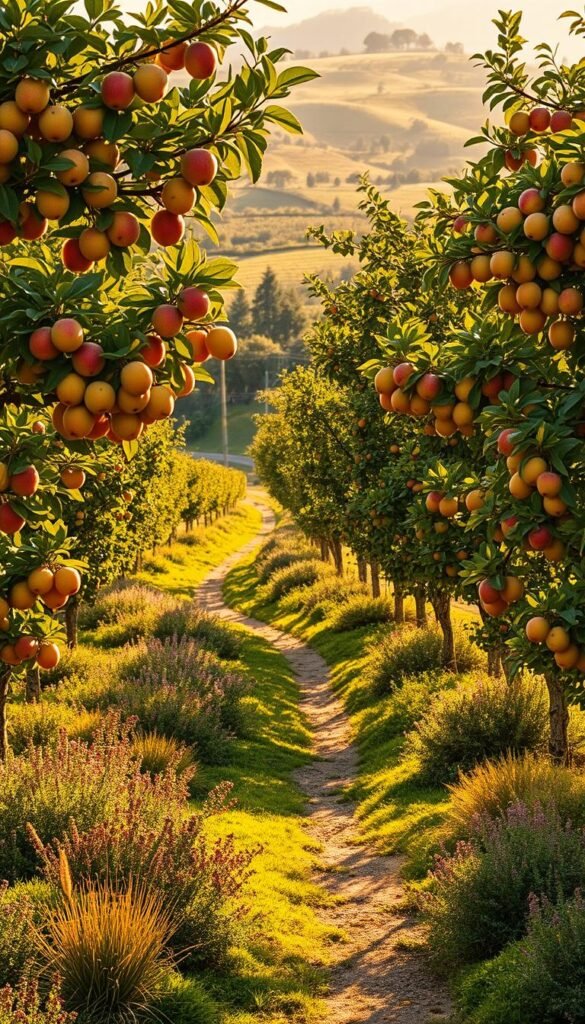Imagine transforming your yard into a space that’s both beautiful and practical. Edible landscaping lets you blend vibrant trees and plants with your current setup, creating a lively outdoor area. This approach turns ordinary yards into multi-purpose environments where aesthetics meet productivity.
Whether you have a large backyard or a cozy patio, fruit trees adapt to your needs. They add color, texture, and fresh snacks right outside your door. Best of all, they work seamlessly with flowers and shrubs, maintaining your landscape’s visual charm while offering homegrown treats.
These additions do more than look pretty. They attract birds and pollinators, turning your space into a mini ecosystem. Plus, homegrown produce means fewer grocery trips and a smaller carbon footprint.
Edible landscaping fits modern trends toward sustainability. It’s a smart way to enjoy nature’s beauty while reaping tasty rewards. Ready to explore how your outdoor space can become both stunning and resourceful?
Embracing the Benefits of Fruit Plants in Your Landscape
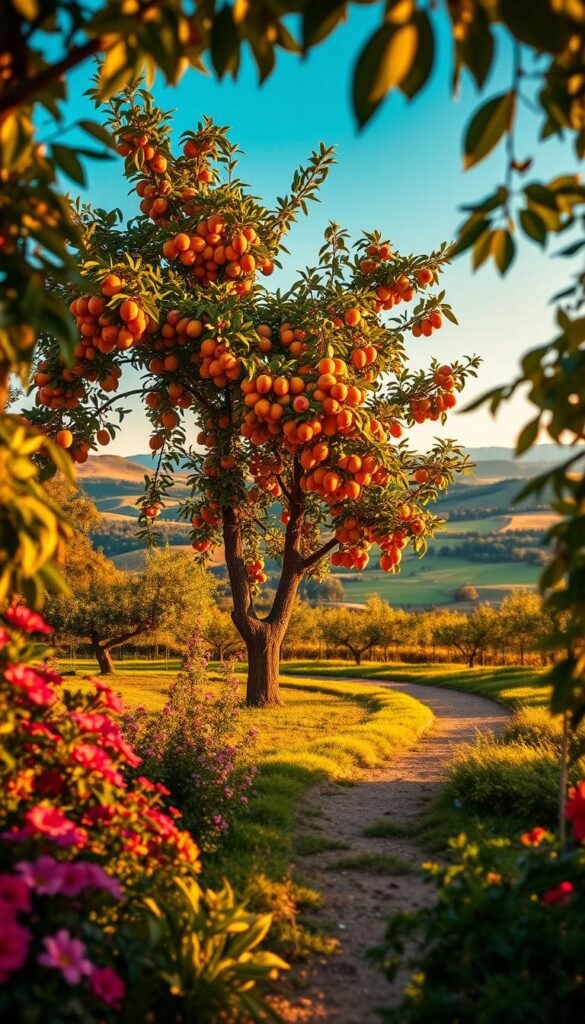
Your outdoor space can become a living masterpiece that nourishes both body and soul. Beyond their tasty rewards, these natural additions offer layered advantages that elevate your yard’s purpose and charm.
Aesthetic and Visual Appeal
Picture spring’s cherry blossoms fading into summer’s lush foliage, followed by autumn’s fiery maple-like hues. Apple and citrus varieties provide winter interest with sculptural branches. This ever-changing display adds depth to your landscape while complementing existing flowers and shrubs.
Environmental Enhancements for Your Home Ecosystem
These natural multitaskers do more than look pretty. They filter airborne pollutants, cool your patio with shade, and host pollinators like hummingbirds. A single pear tree can support dozens of species, turning your yard into a thriving habitat.
Economic and Health Advantages of Homegrown Produce
Why pay $4 for organic blueberries? A well-maintained bush yields pounds of sweet snacks yearly. You’ll enjoy healthier meals knowing exactly how your food was grown—no mystery chemicals or weeks-old imports. Plus, fresh-picked fruits pack more vitamins than store-bought alternatives.
From lowering grocery bills to creating Instagram-worthy views, trees and bushes offer returns that keep growing. They’re not just plants—they’re lifelong partners in crafting a vibrant, sustainable outdoor haven.
Assessing Your Outdoor Space and Soil Conditions
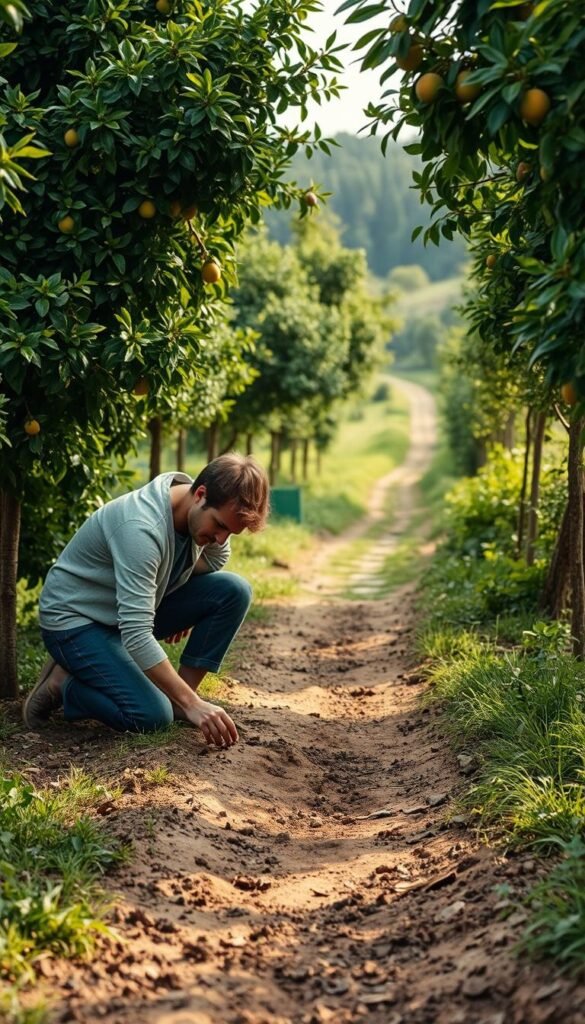
Unlock your yard’s potential by evaluating its natural features first. Like a tailor measuring for a custom suit, your success depends on fitting plants to your specific conditions. Start with these key factors to create a thriving edible oasis.
Evaluating Available Space and Sunlight
Grab a tape measure and sketch your area. Note where shadows fall throughout the day—most edibles need six to eight hours of direct sun. Tight on room? Dwarf citrus or columnar apple varieties grow vertically, saving precious ground space.
Consider mature sizes when placing trees. A standard peach tree needs 15-20 feet width, while compact figs thrive in half that space. South-facing walls boost warmth for heat-loving types like pomegranates.
Preparing Soil and Understanding Climate Needs
Dig deeper than surface looks. Test your soil’s pH—blueberries crave acidity (4.5-5.5), while figs tolerate alkalinity. Mix in compost to improve drainage if puddles linger after rain. “Healthy soil means happy roots,” as seasoned growers say.
Match plants to your USDA zone and microclimates. Stone fruits excel where winters chill below 45°F, while mangoes need frost-free zones. Track your area’s last frost dates and rainy seasons to time planting perfectly.
Incorporating Fruit Plants Garden Elements into Existing Landscapes
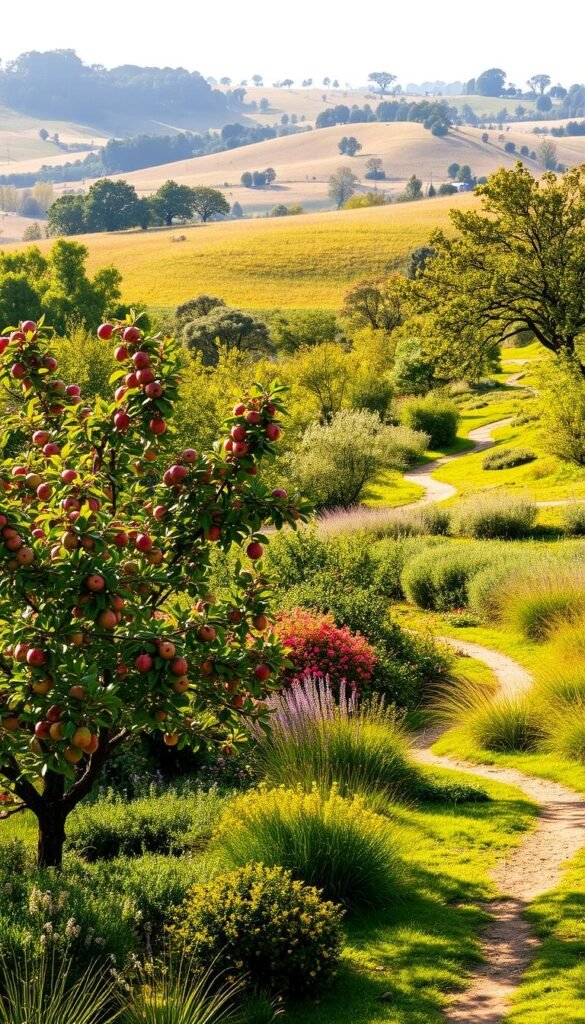
Your yard can become both a visual delight and a snack bar when you merge edible elements with decorative features. Start by choosing specimens that match your space and style, then layer them into your layout like nature’s own puzzle pieces.
Choosing Nature’s Multi-Taskers
Pick fruit trees that serve multiple roles. A weeping cherry offers spring blossoms and summer fruit, while columnar apples save space. For smaller areas, try dwarf citrus or compact figs—they’re perfect for patio pots.
Match varieties to your climate and soil. Blueberries thrive in acidic earth, while persimmons handle clay. “Always plant what your ground loves,” seasoned growers advise. This ensures healthy growth and better harvests.
Artful Placement Strategies
Anchor your landscape design with a statement tree near seating areas. Frame walkways with dwarf plums—their pink blooms make edible borders. Tuck raspberry canes behind existing hydrangeas for surprise snacks.
Mix textures by pairing peach trees with lavender. The silver foliage contrasts beautifully with fuzzy fruit. This approach creates depth while attracting pollinators to your edible plants.
Remember to leave room for maintenance access. A well-planned layout keeps your space functional and photogenic. With smart choices, your outdoor area becomes equal parts pantry and paradise.
Designing a Harmonious Edible and Ornamental Garden
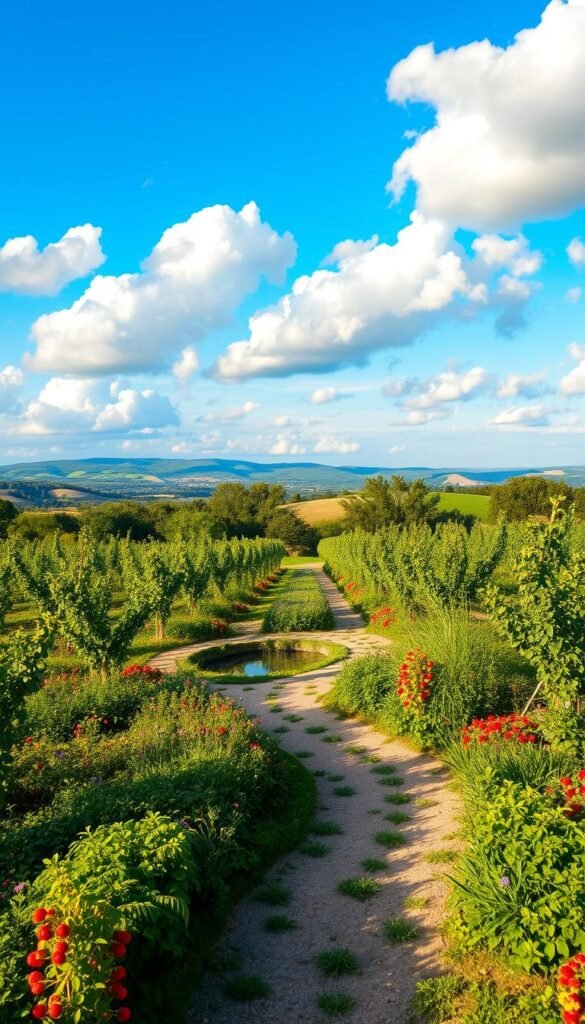
Crafting an outdoor space that delights the senses while feeding the body starts with smart design choices. Think of your plot as a living canvas where every plant pulls double duty—beauty today, harvest tomorrow.
Blending Colors, Textures, and Scents
Bright edible flowers like nasturtiums do more than garnish salads—their orange and yellow blooms create focal points. Pair them with purple basil’s deep hues for contrast that pops. “A garden should surprise you at every turn,” says Portland landscaper Mara Linwood.
| Plant | Color Feature | Texture | Seasonal Peak |
|---|---|---|---|
| Rainbow Chard | Multicolor stems | Crinkled leaves | Spring to Fall |
| Lavender | Purple spikes | Needle-like foliage | Summer |
| Dinosaur Kale | Blue-green | Bumpy surface | Fall to Winter |
Strategic Placement for Year-Round Visual Interest
Edge walkways with rosemary bushes—their pine-like scent greets visitors. Plant red-veined sorrel near ornamental grasses for textural drama. In winter, let kale’s ruffled leaves stand against frost like natural sculptures.
Rotate pansies for spring cheer and Swiss chard for summer vibrancy. This approach keeps your space lively across seasons while filling your kitchen with fresh ingredients. The secret? Treat every plant as both decoration and dinner.
Planting Techniques and Ongoing Care for Fruit Trees and Plants
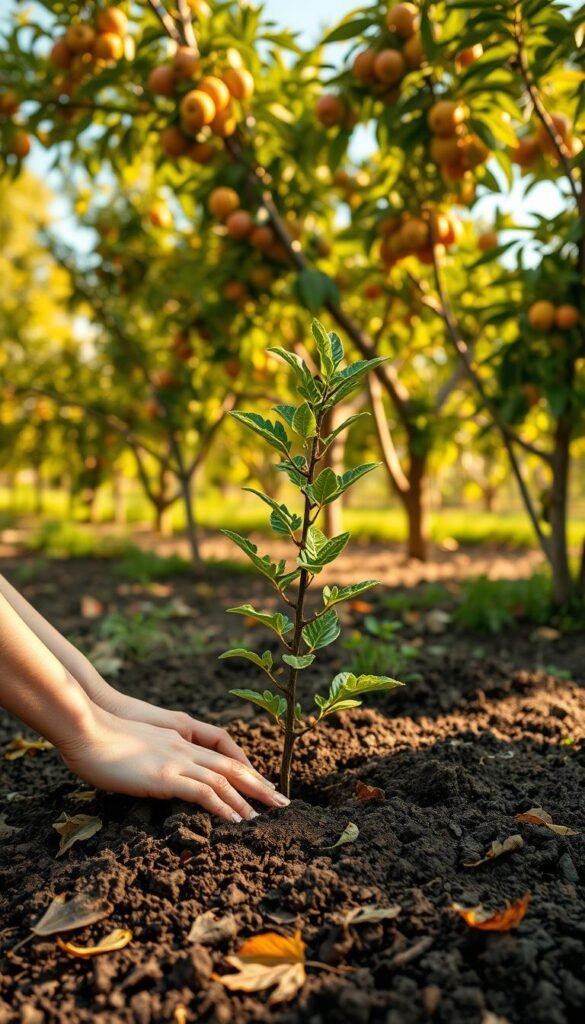
Want your fruit trees to thrive for decades? It starts with smart planting and consistent care. These living investments reward patience—proper techniques now mean bountiful harvests later.
Step-by-Step Planting Process
Clear weeds and loosen the soil in a 4-foot circle. Dig a hole twice as wide as the root ball—but no deeper. Mix compost into excavated dirt for extra nutrients. “A happy root system starts with room to breathe,” says arborist Lisa Tremont.
Position the tree so its root flare sits level with the ground. Backfill halfway, water thoroughly, then finish filling. This settles the soil and removes air pockets. Top with mulch, keeping it 3 inches from the trunk.
Regular Maintenance and Seasonal Care
Young trees need weekly water—think slow, deep soakings. Use a moisture meter: roots should stay damp but never soggy. In spring, apply balanced fertilizer to fuel new growth.
Prune during dormancy to shape structure and remove dead wood. Summer thinning improves air flow and fruit size. Always sterilize tools between cuts to prevent disease spread.
Organic Fertilization and Pest Management
Feed with compost tea or fish emulsion every 6 weeks during the growing season. For pests, try neem oil sprays at dusk—they’re gentle on bees but tough on aphids. Attract ladybugs by planting marigolds nearby.
Spotting curled leaves? Blast them with water to dislodge mites. Your tree will thank you with juicy fruits that taste like victory.
Companion Planting and Enhancing Biodiversity
Turn your outdoor area into a thriving ecosystem by pairing plants that help each other grow. This smart approach boosts your garden’s health while creating a vibrant mix of colors and textures. Let’s explore how strategic partnerships between species can transform your space.
Choosing Complementary Companion Plants
Basil does more than flavor pasta—it repels aphids when planted near fruit trees. Marigolds act as natural bodyguards, their bright blooms deterring nematodes. For a fragrant pest barrier, try garlic or chives around apple trees. These allies attract pollinators while keeping troublemakers at bay.
Natural Pest Control and Soil Enrichment Methods
Lavender isn’t just pretty—it lures ladybugs that feast on mites. Clover planted between shrubs fixes nitrogen in the soil, feeding nearby roots. For a sustainable twist, add native edible plants like serviceberries. They thrive with minimal care and support local wildlife.
Your garden becomes a self-sustaining network where every plant plays a role. From pest patrols to soil improvement, these partnerships let nature do the heavy lifting. You’ll enjoy healthier produce and a landscape that buzzes with life.

